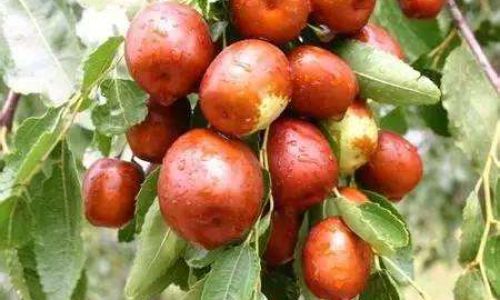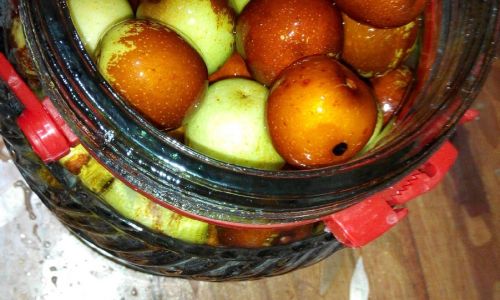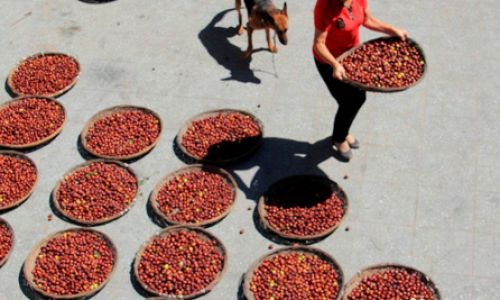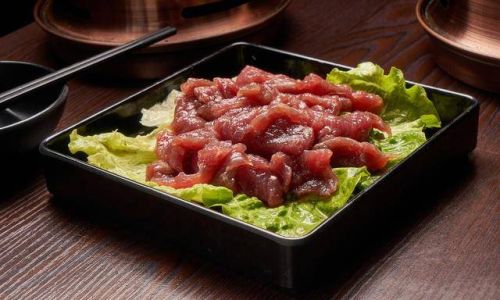Table of content
Introduction
Fresh red dates, also known as jujubes or Chinese dates, are a nutritious and delicious fruit cherished for their sweet flavor and myriad health benefits. These small, oval-shaped fruits are rich in vitamins, minerals, and antioxidants, making them a staple in traditional Chinese medicine and modern diets alike. However, preserving their freshness can be challenging due to their perishable nature. Improper storage can lead to spoilage, loss of flavor, and a decrease in nutritional value. In this comprehensive guide, we will explore various methods for preserving fresh red dates, ensuring they retain their quality, taste, and nutritional profile for as long as possible.

Understanding Fresh Red Dates
Before diving into preservation techniques, it’s crucial to understand the basic characteristics of fresh red dates. These fruits have a thin, delicate skin that can easily bruise or tear, exposing them to bacteria and moisture that accelerate spoilage. The flesh inside is juicy and sweet, with a texture that can become mushy if not stored correctly. Fresh red dates are typically harvested in the fall and winter, making their shelf life even more critical during these seasons.
Importance of Proper Storage
Proper storage of fresh red dates is vital for several reasons:
-
Retention of Nutrients: Fresh red dates are a rich source of vitamins A, C, and B vitamins, as well as minerals like iron, calcium, and magnesium. Proper storage helps maintain these nutrients.
-
Preservation of Flavor and Texture: The sweet, slightly tangy flavor and firm texture of fresh red dates are lost quickly if not stored correctly.
-
Prevention of Mold and Bacterial Growth: Improper storage conditions can lead to the growth of mold and bacteria, rendering the fruit unsafe for consumption.
Methods for Preserving Fresh Red Dates
There are several methods for preserving fresh red dates, each with its own set of advantages and disadvantages. Let’s explore each method in detail.
Refrigeration
Refrigeration is one of the simplest and most effective methods for preserving fresh red dates. By lowering the temperature, you slow down the biochemical processes that lead to spoilage.
-
Preparation: Before refrigerating, inspect the red dates for any signs of damage or mold. Remove any bruised or rotten fruits.
-
Storage Container: Use an airtight container or a plastic bag with a zip-lock seal to prevent moisture and air from entering. Avoid using containers with too much headspace, as this can lead to condensation, which promotes mold growth.
-
Temperature: Store the container in the crisper drawer of your refrigerator, where the humidity is higher and temperatures are more stable. Aim for a temperature of around 32-35°F (0-2°C).
-
Shelf Life: Fresh red dates can last up to two weeks in the refrigerator if stored properly.
Freezing
For longer-term preservation, freezing is an excellent option. Freezing slows down the biochemical processes even further, extending the shelf life of fresh red dates significantly.

-
Preparation: Wash the red dates thoroughly under running water. Pat them dry using a clean kitchen towel or paper towels. Remove any stems or seeds if desired.
-
Flash Freezing: To prevent the fruit from sticking together, flash freeze the red dates first. Place them in a single layer on a baking sheet lined with parchment paper and put the sheet in the freezer for about two hours.
-
Storage Container: Once frozen, transfer the red dates to an airtight container or freezer bag. Label the container with the date for easy tracking.
-
Temperature: Ensure the freezer temperature is set to 0°F (-18°C) or below.
-
Shelf Life: Fresh red dates can be stored in the freezer for up to one year without significant loss of quality.
Drying
Drying is another traditional method for preserving fresh red dates. By removing moisture, you create an environment that is hostile to microbial growth.
-
Preparation: Wash and pat dry the red dates. Remove any stems or seeds.
-
Drying Methods:
- Sun Drying: Lay the red dates in a single layer on a clean, mesh screen or tray. Place the tray in a sunny, well-ventilated area. Turn the fruit occasionally to ensure even drying. This method can take several days depending on the weather.
- Dehydrator: Use a food dehydrator set to a temperature of around 135°F (57°C). Spread the red dates in a single layer on the dehydrator trays. Dehydrate for about 8-12 hours, or until the fruit is completely dry and slightly leathery.
- Oven Drying: Preheat your oven to its lowest setting, typically around 150°F (65°C). Spread the red dates in a single layer on baking sheets. Prop the oven door open slightly with a wooden spoon to allow moisture to escape. Dry for several hours, checking frequently to prevent over-drying.
-
Storage: Once dried, store the red dates in an airtight container in a cool, dark place. They can last for several months.
Canning
Canning is a preservation method that involves sealing food in airtight containers and processing them in boiling water or steam to destroy microorganisms.
-
Preparation: Wash and dry the red dates. Remove any stems or seeds.
-
Syrup Preparation: Make a light syrup by combining equal parts water and sugar in a large pot. Heat until the sugar dissolves, then simmer for a few minutes.

-
Packing: Pack the red dates into clean, sterile canning jars. Pour the hot syrup over the fruit, leaving about half an inch of headspace.
-
Sealing: Wipe the jar rims clean with a damp cloth, then apply lids and rings. Process the jars in a boiling water canner for about 20-30 minutes, depending on your altitude and jar size.
-
Cooling: Remove the jars from the canner and let them cool completely. Check for seals by pressing the center of each lid; if it doesn’t pop up, the jar is sealed.
-
Storage: Store canned red dates in a cool, dark place. They can last for up to a year.
Pickling
Pickling is a preservation method that involves immersing food in a vinegar-based brine. This creates an acidic environment that inhibits the growth of harmful bacteria.
-
Preparation: Wash and dry the red dates. Remove any stems or seeds.
-
Brine Preparation: Combine vinegar (preferably apple cider or rice vinegar), water, and sugar or salt to taste in a large pot. Heat until the sugar or salt dissolves, then simmer for a few minutes.
-
Packing: Pack the red dates into clean, sterile jars. Pour the hot brine over the fruit, leaving about half an inch of headspace.
-
Sealing: Wipe the jar rims clean, then apply lids and rings. Process the jars in a boiling water canner for about 15-20 minutes.
-
Cooling and Storage: Follow the same cooling and storage instructions as for canned red dates.
Conclusion
Preserving fresh red dates doesn’t have to be a daunting task. By choosing the right method—whether it’s refrigeration, freezing, drying, canning, or pickling—you can enjoy the sweet, nutritious benefits of these fruits for weeks, months, or even years. Each method has its own unique benefits and considerations, so choose the one that best fits your needs and preferences. With proper storage, you can ensure that your fresh red dates retain their freshness, flavor, and nutritional value, making them a delightful and healthy addition to your diet.






0 comments